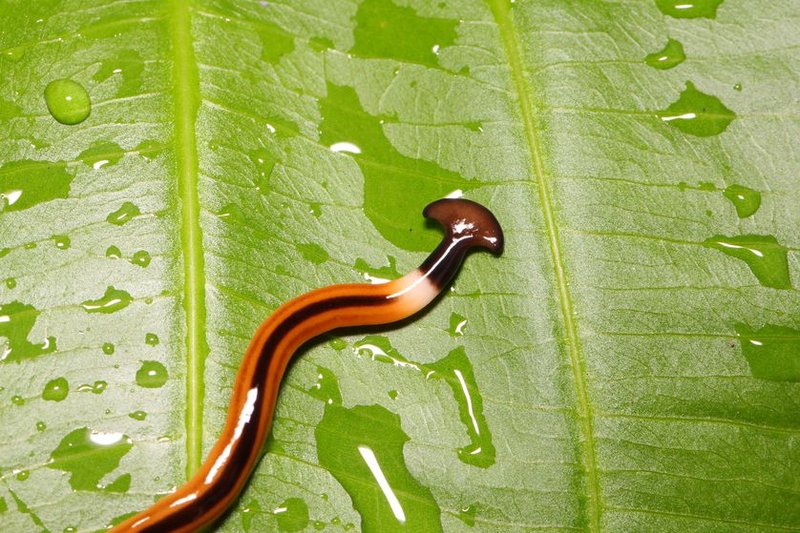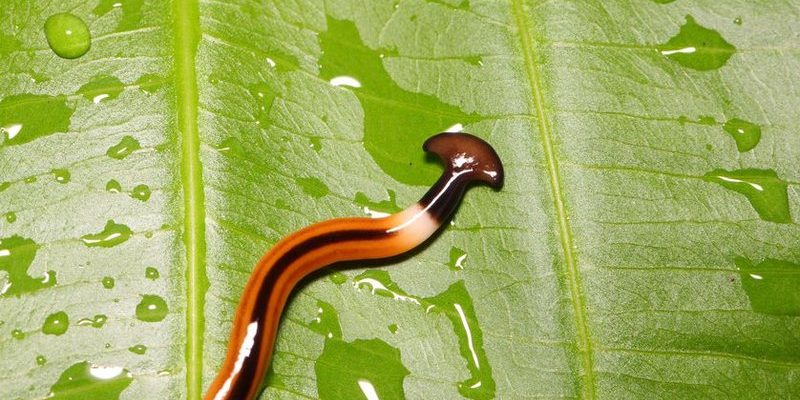
So, what’s the deal? Are hammerhead worms helping your soil thrive, or are they turning it into a battleground? Picture a superhero flick where the hero might not be so great after all. Let’s dive into the world of hammerhead worms, explore their effects on soil health, and figure out where they stand in the great gardening debate.
What Are Hammerhead Worms?
Hammerhead worms, or *Bipalium kewense*, are fascinating creatures that belong to the flatworm family. You might spot them in damp, dark areas of your garden, especially after a rain. They’re typically brown or grey and can grow quite large—some reaching up to 12 inches long. They’ve earned their name due to their unique head shape, which resembles a flattened hammer.
Interestingly, these worms are **predators**. Unlike the common earthworm that munches on organic matter, hammerhead worms prefer their meals to be alive. They mainly feast on other soil-dwelling creatures, such as earthworms and slugs. So, while they may look harmless, they’re like that new neighbor who seems friendly but has a reputation for sneaking into your garden party uninvited.
You might be wondering where they come from. Hammerhead worms are originally from Southeast Asia but have spread to various parts of the world. This expansion has raised some eyebrows because they are now considered an invasive species in many regions. But what does this mean for our soil health?
The Role of Hammerhead Worms in Soil Ecosystems
Let’s break down the role these critters play. In a healthy soil ecosystem, every creature has a job. Earthworms, for example, help break down organic material, aerate the soil, and promote healthy plant growth. Hammerhead worms, on the other hand, disrupt this balance by preying on beneficial organisms.
Here’s where it gets tricky. The **presence of hammerhead worms can lead to a decline in earthworm populations**. Since earthworms are essential for nutrient cycling and improving soil structure, fewer earthworms can mean poorer soil health. It’s like having a team where one key player gets sidelined; the entire team struggles to perform well.
While some may argue that hammerhead worms can help control pests like slugs, the overall effect on soil health tends to lean negative. They can create a domino effect that can lead to diminished soil quality over time, impacting everything from plant growth to crop yields.
Are Hammerhead Worms Harmful to Plants?
You might be thinking, “So, do hammerhead worms directly harm my plants?” In a roundabout way, yes. While they don’t attack plants directly, their predatory nature can lead to a reduction in essential soil organisms, which can ultimately affect plant health.
Healthy soil is full of diverse microorganisms and worms that work together to create a rich environment for plants. When hammerhead worms invade, the balance shifts. Here are a few potential impacts:
- Reduced Nutrient Availability: Fewer earthworms mean less natural composting and nutrient cycling.
- Impaired Soil Structure: Without a good mix of soil organisms, the soil can become compacted, making it harder for roots to grow.
- Increased Pest Problems: If the hammerhead worms kill off earthworms, you could face an uptick in slugs and other garden pests that earthworms usually help control.
Together, these issues can lead to stressed plants that are less productive. Imagine trying to grow a garden but finding that your plants are struggling to survive. That’s what can happen if hammerhead worms take over.
How to Identify Hammerhead Worms
Identifying hammerhead worms isn’t rocket science, but it helps to know what you’re looking for. As mentioned earlier, these flatworms have a distinctive **hammerhead shape**, which sets them apart from other worms. Here’s how to spot them:
- Body Shape: The body is flat and elongated, tapering off towards the tail.
- Color: They are usually brown or grey, with a more or less uniform color throughout their body.
- Movement: They move in a smooth, gliding motion, often observed during wet conditions.
If you come across a worm that fits this description, it’s likely a hammerhead. And before you panic, remember that just seeing one doesn’t mean your garden is doomed. It’s essential to monitor their numbers and take action if you notice an increase.
Managing Hammerhead Worm Populations
So, what can you do if you find hammerhead worms invading your garden? First off, don’t despair. There are steps you can take to manage their populations and protect your soil health. Here are some effective strategies:
- Hand Removal: If you spot a few, you can remove them by hand—just don’t touch them directly, as they can produce toxins. Use gloves or a small tool to pick them up.
- Improve Soil Health: Strengthening the overall health of your soil can help deter these invaders. Regularly add organic matter, like compost, to support beneficial organisms.
- Increase Biodiversity: Planting a variety of plants and flowers can attract beneficial insects and wildlife that can help control hammerhead worm populations.
It’s like creating a fortress around your garden—building resilience helps keep unwanted critters at bay. While hammerhead worms can be problematic, with a little effort, you can maintain a healthy garden ecosystem.
Final Thoughts on Hammerhead Worms and Soil Health
In the grand scheme of soil health, hammerhead worms come with mixed reviews. They can be fascinating to observe but potentially harmful to the delicate balance of your garden ecosystem. Their predatory habits can threaten beneficial organisms like earthworms, which are crucial for nutrient cycling and soil structure.
Taking proactive measures can help mitigate their impact and keep your garden thriving. Remember, every garden is a unique ecosystem, and understanding the players—like the hammerhead worm—helps us become better stewards of our soil.
So, the next time you spot a hammerhead worm, you’ll know what’s at stake. By being aware and proactive, you can protect your garden and ensure that it remains a flourishing space for plants and pollinators alike.

